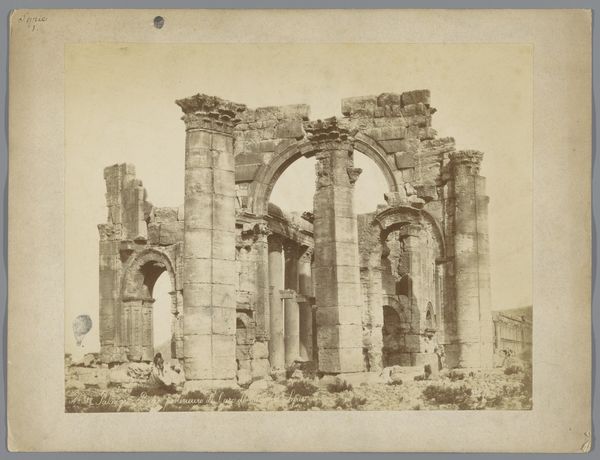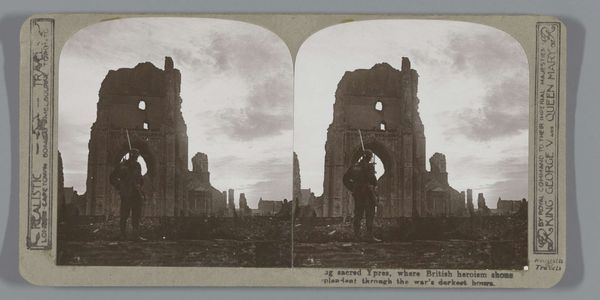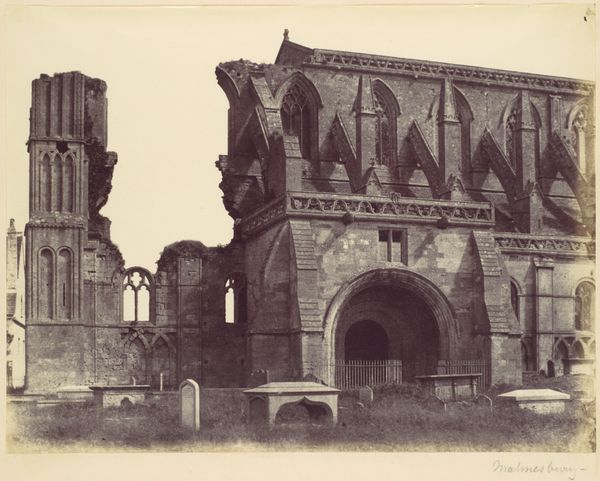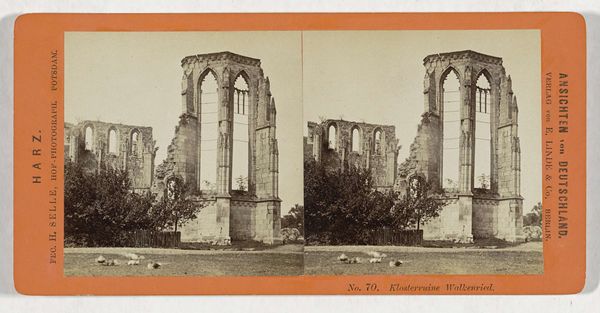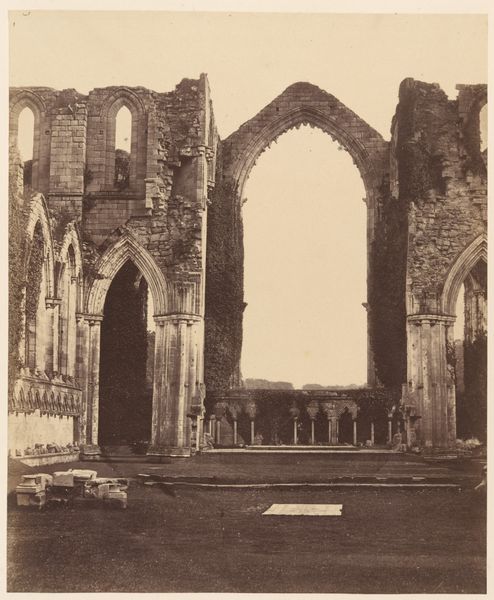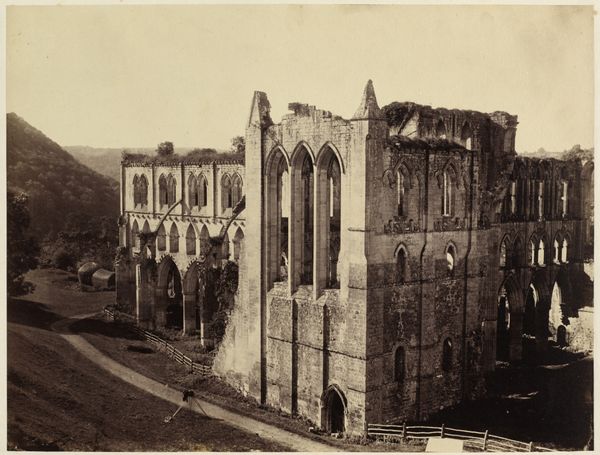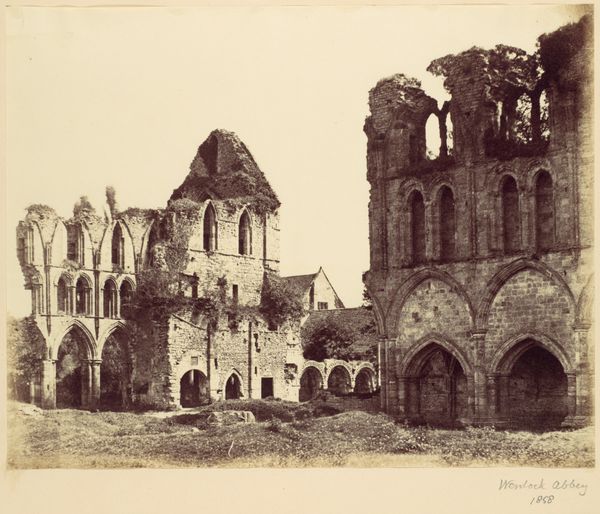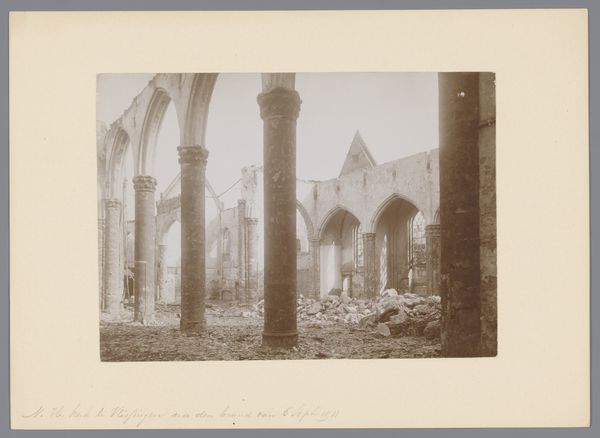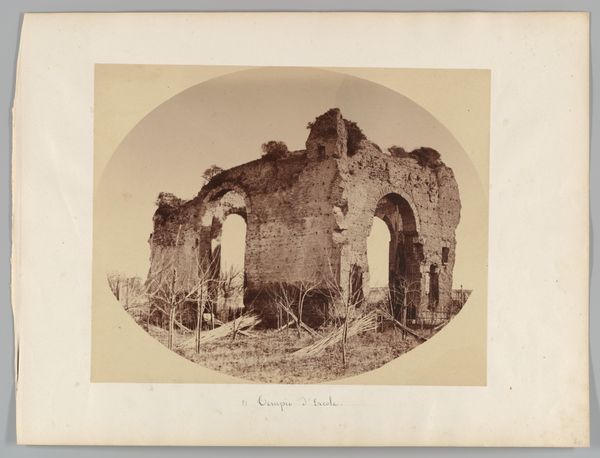
Dimensions: height 87 mm, width 176 mm
Copyright: Rijks Museum: Open Domain
Curator: Before us is Hermann Selle’s photograph, “Kloosterruïne in Walkenried,” taken sometime between 1868 and 1890. The medium is gelatin silver print, presented in a stereoscopic format. Editor: It immediately strikes me as a composition steeped in melancholic grandeur. The ruin seems to rise defiantly, yet the missing roof and crumbling facade speak volumes about lost glory and temporal decay. Curator: Precisely. The romantic style here emphasizes a certain aesthetic of ruin—the strategic framing of the ruined arches against the open sky invites the viewer's eye to wander, composing and decomposing the image simultaneously. Selle uses the photographic medium itself to enhance these notions of decay. Editor: I think we have to acknowledge what that decay represents: a rupture with tradition, the secularization of society following the Enlightenment, and even the dismantling of monastic life—especially within the socio-political context of the late 19th century. Photography allows a democratic and potentially critical view. Who has access and for what purpose? Curator: Yes, and consider how the very structure embodies its function. The empty arches become like open eyes, staring vacantly into the beyond. The stereoscopic effect enhances this visual and perhaps even metaphysical depth, underscoring absence by rendering a simulated sense of presence through doubled vision. Editor: Right. Beyond mere documentation, this image is steeped in power dynamics. Who commissioned it, how was it consumed? It romanticizes loss, but at whose expense? The deliberate staging, figures included for scale, suggests more than just artistic endeavor. Is this not, ultimately, a form of elegiac propaganda for a displaced heritage, accessible through these modern technologies? Curator: It's a captivating image, certainly layered. Editor: Definitely a starting point for a more thorough deconstruction of what we perceive as cultural relics—and how easily even photographs like these become romanticized narratives, stripped from more nuanced historical accounts.
Comments
No comments
Be the first to comment and join the conversation on the ultimate creative platform.
